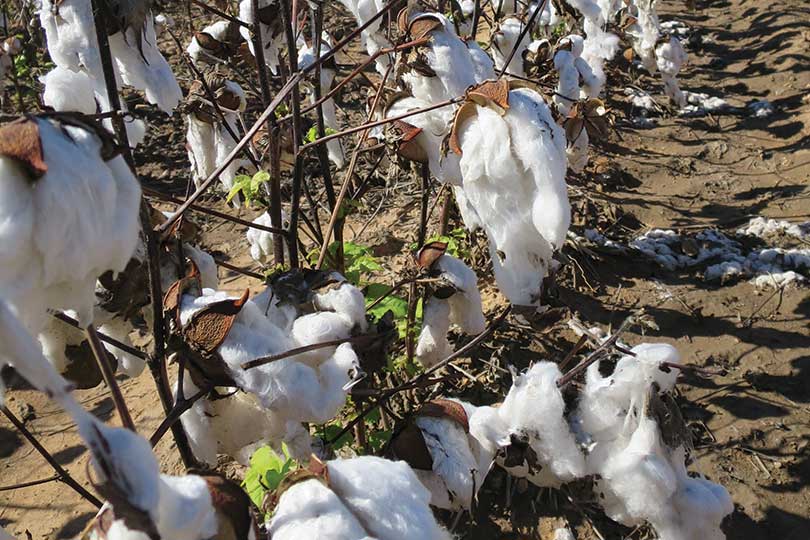By Justin Walker
Communications Specialist
Texas cotton farmers can’t catch a break with the weather this year.
An early-season drought followed by ill-timed rains will likely lead to a below-average 2018 season, according to a Texas A&M AgriLife Extension Service expert.
Cool spring temperatures, summer drought and late-season rains are just a few of the challenges cotton growers faced this year, Dr. Gaylon Morgan, AgriLife Extension statewide cotton specialist, said.
The season started off rough with three cold fronts causing poor emergence and extensive replanting in some fields, Morgan said. Plenty of sun and relatively-high temperatures, coupled with drought conditions, advanced cotton maturity in South and East Texas, leading growers in those areas to harvest earlier than normal.
Most of the dryland cotton in the state suffered from the lack of rain, Morgan said. Where it did survive, mostly in South and East Texas, yields were below average, often not worth harvesting.
Timely rains and plenty of heat units in the Upper Gulf Coast sparked hopes for farmers in the area as the season progressed, Morgan said.
“We got off to a rough start but had a good looking crop in the Upper Gulf Coast before the rains set in in September,” he said in an interview with AgriLife Today. “Now there’s been a month of off and on wet weather at the wrong time for the remaining cotton in the Upper Gulf Coast and irrigated cotton in the Blacklands.”
For the Upper Gulf Coast and Brazos Bottom, it’s the third consecutive year they have received damaging late-summer rains, including Hurricane Harvey just a year ago.
Harvest was 95-98 percent completed in the Rio Grande Valley before the rains hit, Morgan said. But weather has hindered the destruction of post-harvest cotton stalks, a requirement for ongoing success of the boll weevil eradication program.
About 25-35 percent of the cotton crop was still in the fields in the Upper Gulf Coast as the rains started, with 60-70 percent of the Brazos Bottom crop in a similar situation, he said.
South Plains and Panhandle cotton should be ready to harvest soon, Morgan said, but most dryland cotton in the area was lost to drought.
Last week and earlier this week, Freezing temperatures in the Panhandle weren’t as devastating as cotton farmers like Casey Kimbrell feared. But the area did receive about 2.5 inches of rain as corn harvest began.
“The rain put us behind a couple of weeks,” Kimbrell, who farms in Moore County, said.
But drought and ill-timed rains weren’t the only obstacles facing Kimbrell and other farmers in the Panhandle.
They had hailstorms in June that damaged a substantial amount of cotton.
“Every year, we have adverse weather. It’s just a matter of what kind we’re going to get and how bad it’ll be,” Kimbrell said.

